Electromagnetic pulses (EMPs) are sudden bursts of electromagnetic radiation that can damage or destroy electronics, including computers, telephones, and other electronic equipment. EMPs can be caused by a variety of sources, including atmospheric nuclear explosions, solar flares, and even lightning strikes [1].
The effects of an EMP can be devastating, causing widespread disruption to communication systems and critical infrastructure. In today’s interconnected world, where everything from transportation to banking depends on electronic systems, protecting electronics from EMPs has become more important than ever.
In this article, we will provide a comprehensive guide on how to protect electronics from EMPs. We will discuss the different types of EMPs and their effects on electronics, as well as the various methods of EMP protection, including surge protectors, Faraday cages, and grounding.
We will also provide practical tips on how to prepare for an EMP event and how to test the effectiveness of your EMP protection measures. By following these guidelines, you can ensure that your electronic devices and infrastructure are protected from the devastating effects of an electromagnetic pulse.
What is an EMP (Electromagnetic Pulse)?
It is typically caused by a high-energy release of electromagnetic radiation, which can be generated by various means [2].

There are three main types of EMP:
- Nuclear EMP (NEMP): This type of EMP is caused by a high-altitude nuclear explosion. When a nuclear weapon detonates in the atmosphere, it releases intense gamma radiation, which interacts with the Earth’s magnetic field, creating a powerful EMP. The NEMP can affect a large geographic area, potentially damaging or disabling electronic equipment within that range;
- Solar EMP (SEMP): Also known as a solar flare or coronal mass ejection, this type of EMP is caused by massive eruptions on the Sun’s surface. These events release a significant amount of electromagnetic radiation, including X-rays and energetic particles, which can induce currents in long conductors such as power grids and communication networks;
- Non-nuclear EMP (NNEMP): This type of EMP is generated by high-power electromagnetic devices, such as specialized explosive devices or electromagnetic weapons. NNEMP devices produce an electromagnetic field by rapidly discharging large amounts of energy, which can disrupt or damage electronic systems in their vicinity;
The effects of an EMP can vary depending on its intensity, proximity, and vulnerability of the affected electronics. It can cause widespread disruptions, leading to the loss of communication systems, power outages, and the failure of critical infrastructure. Electronic devices, including computers, vehicles, telecommunications equipment, and power grids, are particularly vulnerable to the damaging effects of an EMP.
Given the potential impact of an EMP, efforts are made to protect critical systems and infrastructure against its effects. This includes the use of shielding, surge protectors, and the design of hardened systems capable of withstanding electromagnetic interference.
Does an EMP Permanently Destroy Your Electronics?
The extent of damage caused by an Electromagnetic Pulse (EMP) to electronic devices can vary depending on several factors, such as the intensity of the pulse, the distance from the source, and the resilience of the affected electronics. While an EMP has the potential to cause significant harm to electronic systems, it does not necessarily result in permanent destruction in all cases.

Here are some possible outcomes for electronics exposed to an EMP:
- Complete Destruction: In certain scenarios, particularly with high-intensity EMPs or electronics that lack proper protection, the EMP can cause irreparable damage, rendering the devices completely inoperable;
- Temporary Malfunction: Electronics may experience temporary disruptions or malfunctions when exposed to an EMP. These malfunctions can range from minor glitches to more significant issues, but they can often be resolved by power cycling the device or performing simple repairs;
- Permanent Damage: Some electronic components or systems may suffer permanent damage that can’t be easily repaired. This can result in the need for component replacement or even the entire replacement of the affected device [3];
What Electronics Would Survive An EMP?
In today’s highly connected and technologically advanced world, we rely heavily on electronic devices for communication, entertainment, and day-to-day functioning. However, in the event of an Electromagnetic Pulse (EMP) – a burst of electromagnetic radiation that can occur naturally from solar flares, or artificially from nuclear detonations – these devices can be rendered useless.
While the effects of an EMP can have devastating consequences, some electronics may be able to survive and continue to function. In this article, we will explore what electronics would survive an EMP, including solar panels, non-electric and manual appliances, vintage electronics, and small, portable electronics [4].
Solar Panels
Solar panels can be an excellent source of electricity in the event of an EMP. Unlike traditional power grids that rely on long-distance transmission lines and electronic control systems, solar panels generate electricity locally and are not dependent on external infrastructure. They are also immune to EMPs because they operate at a lower voltage and do not contain the large integrated circuits and microprocessors that are vulnerable to damage. In fact, solar panels can even be used to power other electronics or appliances that have survived the EMP.
Non-Electric Appliances
Non-electric appliances, such as gas stoves, wood-fired ovens, and hand-cranked grinders, are also likely to survive an EMP and provide a practical means of cooking and food preparation. These appliances operate entirely without electricity, meaning they are immune to any EMP damage. They are ideal for those who live in rural areas or have access to open land where they can gather their own fuel.
Manual Appliances
Just like non-electric appliances, manual appliances that require physical effort rather than electricity to operate are also highly resistant to EMPs. Examples include manual can openers, egg beaters, hand-cranked sewing machines, and manual typewriters. These appliances may not be as efficient or fast as their electric counterparts, but they are highly reliable, and they do not require any electricity at all.
Vintage Electronics
Vintage electronics, such as antique radios, typewriters, and mechanical watches, are also more likely to survive an EMP because they were manufactured before the widespread use of integrated circuits and microprocessors. These devices have simpler electronic systems that are less susceptible to damage from electromagnetic pulses.
Additionally, many of these vintage electronics have already survived the test of time and are built to last. They are often made with high-quality materials and rugged construction, making them well-suited to withstand EMPs and other natural disasters.
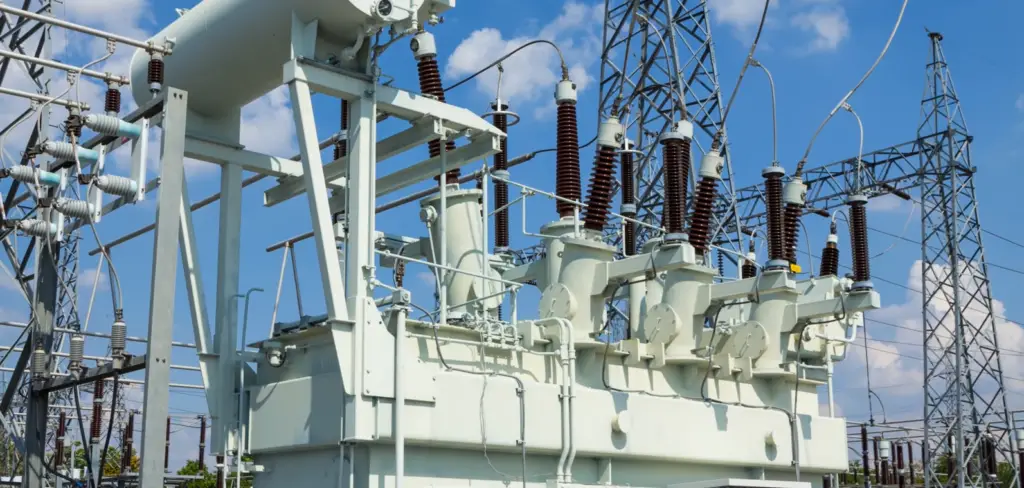
Small Portable Electronics
Small, portable electronics like handheld radios, flashlights, and personal medical devices are also more likely to survive an EMP. These devices are often built to withstand rugged conditions and may be designed with reinforced housings and shields to protect them against electromagnetic interference. Additionally, they operate at lower voltages and generally have fewer integrated circuits and microprocessors than larger electronics, making them less vulnerable to EMP damage [5].
These containers can act as Faraday cages, but they must be sealed well and designed specifically for this purpose in order to provide proper protection.
Basic DIY EMP Protection You Can Try At Home
Use Tinfoil
One of the simplest and most effective ways to protect your devices from an EMP is to wrap them in tinfoil. Tinfoil is a lightweight, flexible material that can easily be shaped around devices like smartphones, radios, or small portable electronics. The metal in the tinfoil creates a barrier between the device and the electromagnetic pulse, preventing the pulse from damaging the device’s circuitry.
It’s essential to ensure that the tinfoil completely covers the device and has no gaps; otherwise, the EMP can still affect the device through the gaps. Additionally, it’s important to remember that tinfoil only provides limited protection and may not be suitable for larger electronics like televisions or computers.
Use A Steel Garbage Can With A Lid
If you’re looking for a DIY EMP protection solution, using a steel garbage can with a lid is an effective option. When lined with cardboard or foam, a steel garbage can acts as a Faraday cage, which is an enclosure designed to block electromagnetic fields from entering and damaging devices. The steel walls of the garbage can create a conductive shell that redirects the EMP’s energy around the can, keeping the electronics inside safe [6].
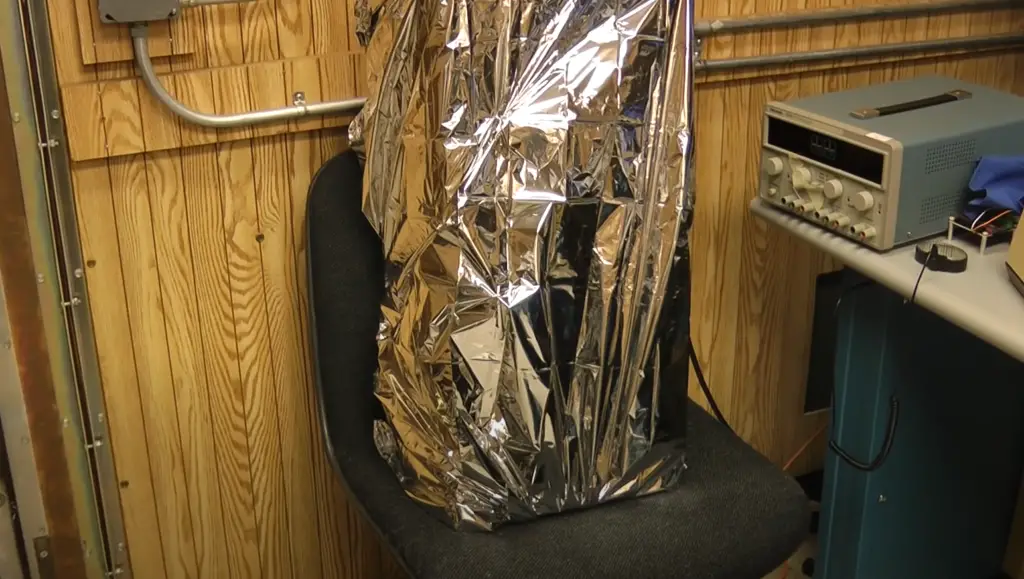
It’s important to note that the lid of the garbage can be tightly sealed, and any gaps must be covered in foil tape to ensure that the EMP can’t penetrate the cage. Additionally, the cardboard or foam lining should be thick enough to prevent any contact between the can’s metal and the devices inside.
A Metal Roof Or Solar Paneled House
If you’re building a new home or renovating, a metal roof or a house with solar panels can offer some EMP protection. The metal roof or solar panels act as a large, continuous surface that can bounce the EMP’s energy away from the electronics inside the house. The metal elements of the roof or solar panels also provide a conductive shield that blocks the EM radiation from entering the house.
However, it’s important to note that a metal roof or solar panels alone are not enough to provide complete protection against an EMP. The walls of the house are still vulnerable, and any electronics that are not unplugged may still be damaged. To maximize protection, it’s recommended that homeowners also use a Faraday cage or other protective measures for their electronic devices and appliances.
Put Devices In The Microwave
Another simple and effective technique for protecting your electronic devices from an EMP is to put them in the microwave. A microwave is designed to block electromagnetic radiation from leaking out and can also protect devices from an EMP. However, it’s important to note that the microwave must be unplugged and must not be in use at the time of the EMP event, as the surge of energy can overload the microwave and cause damage.

It’s also essential to ensure that the device is placed in the center of the microwave and does not touch the sides. The microwave door must be closed and must be sealed with aluminum foil tape to prevent any gaps that can allow the EMP to penetrate the microwave.
Methods To Protect Electronics from an Electromagnetic Pulse:
Method 1: Converting a Shoe Box Using Aluminum Foil
One simple and cost-effective method involves converting a shoe box into a makeshift Faraday cage using aluminum foil. Line the interior of the shoe box with several layers of aluminum foil, ensuring that the entire surface area is covered. Place your electronic devices inside the box and seal them tightly using conductive tape to create an enclosure. While this method may provide some basic protection, it is important to note that aluminum foil alone may not offer optimal shielding against the full range of EMP frequencies and intensities [7].
Method 2: Using a Bucket
Another method is to utilize a metal bucket as a makeshift Faraday cage. Choose a bucket made of galvanized steel or another conductive metal. Place your electronic devices inside the bucket, ensuring they are not in direct contact with the metal surface. Seal the bucket tightly using a metal lid or by securing aluminum foil over the opening. The conductive properties of the metal bucket help redirect and absorb EMP energy, providing a level of protection for your electronics.
Method 3: Testing Your Faraday Cage With a Cell Phone
It is crucial to verify the effectiveness of your Faraday cage before relying on it to protect your electronics. One simple test involves placing a working cell phone inside the Faraday cage and closing it securely. Try calling the phone from another device while it is inside the cage. If the call cannot connect or the phone does not ring, it suggests that the Faraday cage is functioning properly.
However, if the call connects or the phone rings, it indicates that the cage may have gaps or insufficient shielding, requiring further adjustments or improvements.
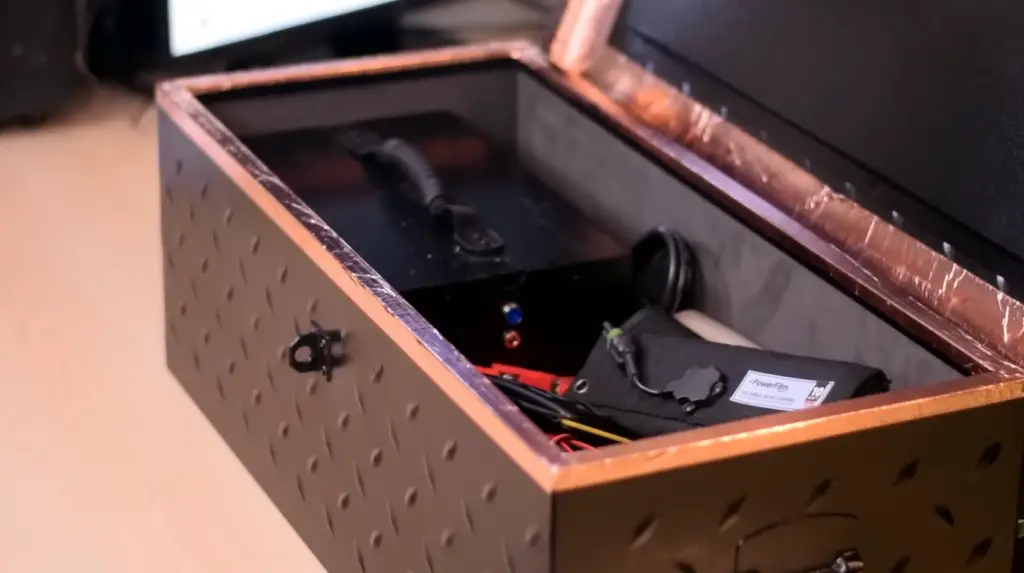
About A Faraday Cage:
What Is A Faraday Cage?
A Faraday cage, also known as a Faraday shield, is an enclosure made of conductive material that is designed to protect electronic devices from electromagnetic fields. The cage works by blocking electromagnetic waves from entering the enclosure, thereby protecting the devices within it [8].
How Does A Faraday Cage/Container Work?
A Faraday cage works based on the concept of electromagnetic shielding. When an electromagnetic field encounters a conductive material like copper, aluminum, or steel, the electrical charge flows through the material and creates its electromagnetic field that cancels out the external field. This cancels or reduces the electromagnetic energy that would otherwise be absorbed by the protected device.
The Faraday cage creates a continuous conductive layer around the protected device, which means that the cage itself becomes electrified but keeps all the flow of electricity on its surface. This keeps the electromagnetic field away from the inside of the cage, thereby protecting the devices within it.
Determining If A Container Is Effective EMP Protection
The effectiveness of a Faraday cage in protecting electronics from EMPs depends on various factors, including the frequency of the electromagnetic waves, the strength of the EMP, the size of the enclosure, the thickness of the conductive material used to make the cage, and the type of device being protected.
To test the effectiveness of a Faraday cage, a portable electromagnetic susceptibility test (PEST) can be performed using an electromagnetic pulse generator (EMP). The PEST produces an electromagnetic pulse that simulates the effects of a real EMP event.
Building A Faraday Cage
Building a Faraday cage is a simple DIY project that can be done using commonly available materials. The cage can be made of many conductive materials, including copper mesh, aluminum foil, steel, or iron.
To build a Faraday cage, the chosen conductive material must be wrapped around the device to be protected. All surfaces that must be connected to create a good electrical bond should be connected. The cage’s seams must be sealed using conductive adhesive copper foil or copper mesh to protect the device from any potential gaps where the electromagnetic energy could leak through [9].
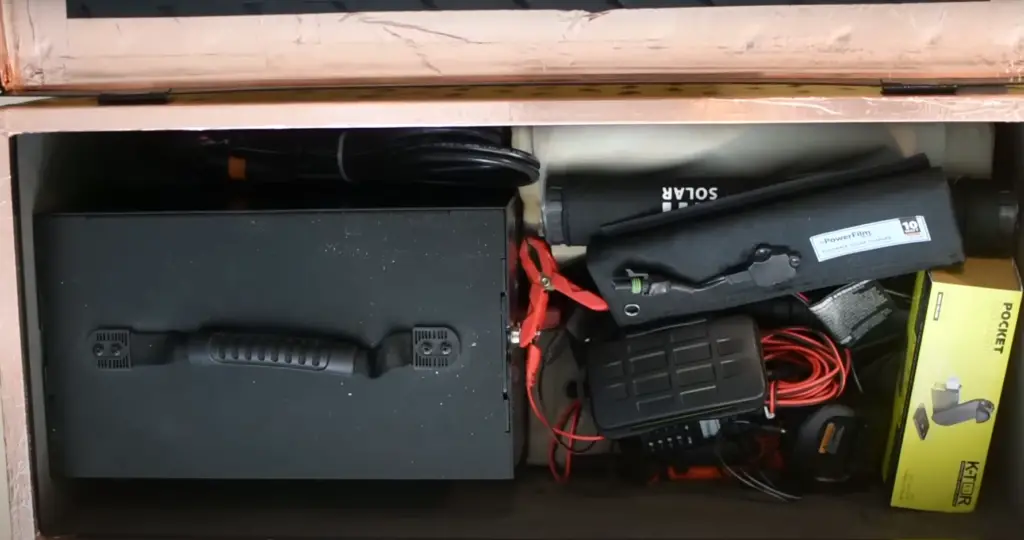
What EMP Protection Doesn’t Work:
- Aluminum Foil: While aluminum foil has some limited shielding properties, it is not sufficient to provide reliable protection against the high-intensity and wide frequency range of an EMP. Using aluminum foil alone as a shielding material for electronics or creating a makeshift Faraday cage with foil may not provide adequate protection;
- Common Surge Protectors: Standard surge protectors, commonly used to protect electronic devices from power surges, are not designed to handle the high-energy and rapid rise time characteristics of an EMP. They typically offer minimal protection, if any, against EMP-induced currents or voltage spikes;
- Unplugging Electronics: Simply unplugging electronic devices from power sources or removing batteries is not a foolproof method of EMP protection. While it may reduce the risk of damage caused by power surges or voltage spikes, it does not offer sufficient shielding against the full range of EMP frequencies and intensities;
- RFID Blocking Materials: While RFID blocking materials are effective in preventing unauthorized access to RFID signals, they are not equivalent to proper EMP shielding. RFID-blocking materials are typically designed to block specific radio frequencies and may not provide adequate protection against the broad spectrum of electromagnetic radiation produced by an EMP;
- Enclosures without Proper Sealing: Creating an enclosure using conductive materials, such as metal, can offer some level of EMP protection. However, it is essential to ensure that the enclosure is properly sealed to prevent any gaps or openings that could allow electromagnetic energy to enter or exit. Inadequate sealing can compromise the effectiveness of the shielding and leave devices vulnerable to EMP damage;
- Short-Term Power Outage Solutions: Backup power systems, such as uninterruptible power supplies (UPS) or backup generators, are not designed specifically for EMP protection. While they may offer temporary power during an outage, they do not provide sufficient shielding against the intense electromagnetic fields generated by an EMP [10];

How to Prepare Your Home for an EMP Attack:
1) Invest in Faraday Bags or Cages
One effective way to protect your electronic devices is by investing in Faraday bags or cages. Faraday bags are made of conductive materials that block electromagnetic radiation. They provide a portable and convenient solution for protecting smaller devices like smartphones, radios, and portable chargers. Faraday cages, on the other hand, are larger enclosures that can shield larger electronics and even small appliances. Ensure your bags or cages are properly sealed to prevent any gaps that could compromise their effectiveness.
2) Keep EMP-Resistant Devices on Hand
Consider acquiring EMP-resistant devices that can withstand the effects of an EMP attack. Look for options such as military-grade communication equipment, battery-powered radios, or EMP-hardened solar-powered devices. These devices are designed with additional protection measures to minimize the impact of EMP. Having these devices readily available will allow you to stay informed and connected during and after an EMP event.
3) Depend Less on Electricity
Reducing your dependence on electricity is essential for EMP preparedness. Begin by identifying critical needs and finding alternative solutions. Consider investing in non-electric or manual alternatives such as hand-cranked radios, battery-operated lanterns, and non-electric cooking appliances.
4) Create an Emergency Plan
Developing a comprehensive emergency plan is vital for any potential disaster scenario, including an EMP attack. Your plan should include communication protocols, evacuation routes, and designated meeting points for family members. Establish a network of trusted contacts with whom you can stay in touch during emergencies. Educate your family on the potential risks and the actions to take in case of an EMP attack. Regularly review and practice your emergency plan to ensure everyone is prepared and aware of their roles.
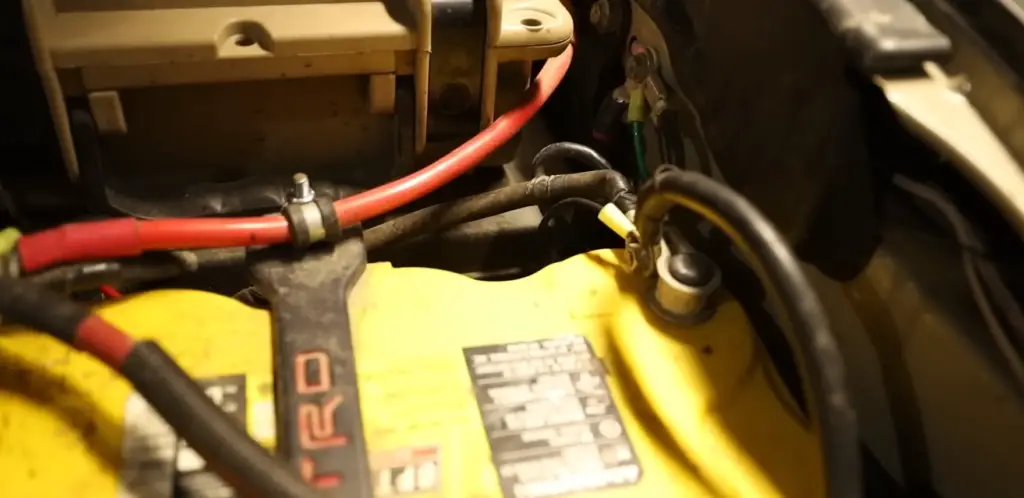
FAQ
1. What electronics can survive an EMP?
The electronics that are more likely to survive an EMP are those that have been specifically designed or hardened to withstand electromagnetic interference. This typically includes military-grade equipment, certain critical infrastructure systems, and specialized electronics designed for protection against EMP effects. These hardened systems often incorporate shielding, surge protectors, and other protective measures to mitigate the impact of an EMP.
2. Will aluminum foil protect electronics from EMP?
Aluminum foil, by itself, is not an effective protection against EMP. While it can provide some limited shielding against certain types of electromagnetic radiation, it is not sufficient to protect electronics from the high-intensity and wide frequency range of an EMP. To effectively protect electronics, specialized EMP shielding materials and techniques are required.
3. Does an EMP permanently destroy electronics?
An EMP does not necessarily permanently destroy all electronics. The impact of an EMP on electronic devices can vary, ranging from no damage to temporary malfunctions or permanent damage. In some cases, electronics may be completely destroyed and rendered inoperable by the EMP. However, with proper protection measures in place, such as EMP hardening techniques, shielding, and surge protectors, the likelihood of permanent destruction can be significantly reduced.
4. Will EMP damage solar panels?
Solar panels themselves are less susceptible to EMP damage compared to sensitive electronics. However, the supporting infrastructure and control systems of solar panels, including inverters and other electronics, can be vulnerable to EMP. If these supporting components are not adequately protected, an EMP can disrupt or damage them, affecting the functionality of the solar power system.
5. What devices would survive an EMP?
Devices that are designed with EMP protection in mind, such as military-grade equipment and certain critical infrastructure systems, have a higher chance of surviving an EMP. These include some communication systems, military hardware, and specific industrial equipment that incorporate EMP hardening techniques. Consumer electronics and less critical devices generally have a higher vulnerability to EMP [11].
6. What vehicles would survive an EMP?
Vehicles with minimal electronic components or those with EMP-hardened systems have a higher likelihood of surviving an EMP. Older vehicles without sophisticated electronic systems and ignition control modules, such as some older model cars and diesel vehicles, may have better resistance to EMP effects. However, modern vehicles with complex electronic systems are generally more vulnerable to EMP damage.
7. Will a generator work after an EMP?
The functionality of a generator after an EMP depends on several factors, including the design of the generator and the severity of the EMP event. If the generator’s electronic components or control systems are adequately protected against EMP, it has a better chance of working after an EMP event. However, if the generator is not shielded or hardened against EMP, its electronic components may be damaged, leading to potential malfunction or failure.
8. Will EMP destroy wires?
EMPs can cause voltage surges in wires, which can damage or destroy electrical equipment. The extent of the damage will depend on the strength of the EMP, as well as the specific equipment and wiring. Shielding wires with metal conduits or using surge protectors can help mitigate the effects of an EMP.
9. What is the best material for a Faraday cage?
Good materials for a Faraday cage include copper, aluminum, and galvanized steel. The cage should be a complete enclosure with no gaps or holes [12].
10. Is a car a Faraday cage?
A car can act as a partial Faraday cage, as the metal body and frame can provide some protection from EMPs. However, the car’s windows and doors may not provide complete protection, and any equipment connected to the car’s electrical system could still be vulnerable.
11. How long does EMP last?
The duration of an EMP will depend on the source and strength of the pulse. A nuclear EMP can last for several hundred nanoseconds and affect an area of several hundred square miles, while a solar EMP can last for hours and affect the entire planet.
12. Will EMP destroy flashlights?
If a flashlight is not protected by a Faraday cage or surge protector, it can be vulnerable to damage from an EMP. The damage would depend on the strength of the EMP and the specific equipment.
13. Can I make my house a Faraday cage?
It is possible to make your house into a Faraday cage, but it may not be practical or reliable. This would involve lining the walls and roof with a conductive material such as copper, which would be very expensive and difficult to implement effectively. It would also require extensive testing to ensure that the cage is effective against all types of electromagnetic fields.
14. Will cell phones work after an EMP?
It is unlikely that cell phones will work after an EMP event, as the electromagnetic pulse could damage or destroy the electronic components. However, a properly protected cell phone inside a Faraday cage or shielded bag may remain functional.
15. How long does an EMP disable electronics?
The length of time that electronics will be disabled by an EMP depends on the strength of the pulse and the specific equipment. In some cases, electronics may be permanently damaged, while in other cases, they may only experience temporary disruption and can be restored after the pulse has passed.
16. Is EMP damage permanent?
EMP damage can vary in severity, and whether it is permanent or not depends on several factors. In some cases, the damage caused by an EMP can be permanent, rendering electronic devices and systems completely inoperable. However, not all devices may experience permanent damage. Some electronics may only suffer temporary malfunctions that can be resolved by power cycling or repairing the affected components. The extent of damage and the ability to recover functionality will depend on the resilience of the device, the intensity of the EMP, and the level of protection implemented.
17. Do Faraday cages need to be grounded?
While Faraday cages can provide some level of protection without being grounded, grounding is highly recommended to enhance their effectiveness. Grounding helps to dissipate and divert any electromagnetic energy that penetrates or accumulates on the cage, improving the overall shielding effectiveness. By connecting the Faraday cage to a proper grounding system, any unwanted currents or electromagnetic radiation can be safely discharged. Grounding also helps protect the enclosed devices from electrostatic discharge (ESD) and external electrical events.
18. Can gold be used as a Faraday cage?
Gold is a highly conductive material and can be used as a component of a Faraday cage. However, due to the high cost of gold, it is not commonly used for constructing large-scale Faraday cages. Other more cost-effective conductive materials like copper, aluminum, or galvanized steel are typically preferred for creating Faraday cages. These materials provide good electrical conductivity and are easier to work with for most applications.
19. Can EMP penetrate the ground?
The ability of an EMP to penetrate the ground depends on the frequency range and intensity of the pulse, as well as the properties of the ground itself. In general, high-frequency EMP signals have less penetration capability and tend to be absorbed or attenuated by the ground. However, lower-frequency components of an EMP may propagate through the ground to some extent. The actual penetration and behavior of an EMP in the ground can be complex and depend on factors such as soil conductivity, moisture content, and depth of burial.
20. Can an EMP go through walls?
An EMP can partially penetrate walls and other solid objects, but the extent of penetration depends on the materials and thickness of the walls. The higher the frequency of the EMP, the less it tends to penetrate solid objects. However, EMP pulses can induce currents and voltages in conductive materials, such as wiring and metallic structures within walls, potentially causing damage to electronics inside buildings.
The ability of an EMP to penetrate walls also depends on the construction materials used. For example, concrete and brick walls provide better shielding against EMP compared to lightweight materials like wood or drywall. Additionally, metal structures within walls, such as rebar or wiring, can act as antennas and potentially facilitate the penetration of EMP.
Useful Video: How to protect your electronics from a EMP attack.
References
- https://www.wikihow.com/Protect-Electronics-from-an-Electromagnetic-Pulse
- https://uwkcase.com/blogs/blog/how-to-protect-electronics-against-an-emp-electromagnetic-pulse
- https://boncharge.com/blogs/news/how-to-protect-electronics-from-emp
- https://teamenoch.com/blog/how-to-protect-your-home-and-electronics-against-emps-lightning-and-power-surges/
- https://thesurvivalmom.com/protect-your-gear-from-emp/
- https://mosequipment.com/blogs/blog/faraday-bags-and-emp-protection-protecting-your-electronics-in-an-age-of-growing-electromagnetic-threats
- https://doh.wa.gov/sites/default/files/legacy/Documents/Pubs/320-090_elecpuls_fs.pdf
- https://www.survivalfood.com/protect-against-emp/
- https://shopsolarkits.com/blogs/learning-center/how-to-protect-electronics-from-emp-threats
- https://slnt.com/blogs/news/what-is-an-emp-attack-and-how-to-prepare
- https://offgrid.co/blogs/journal/understanding-the-real-threat-of-emp-attacks
- https://www.forbes.com/sites/jamesconca/2021/09/27/the-electromagnetic-pulse-threatcant-we-just-paint-over-it/?sh=11dfd8001883





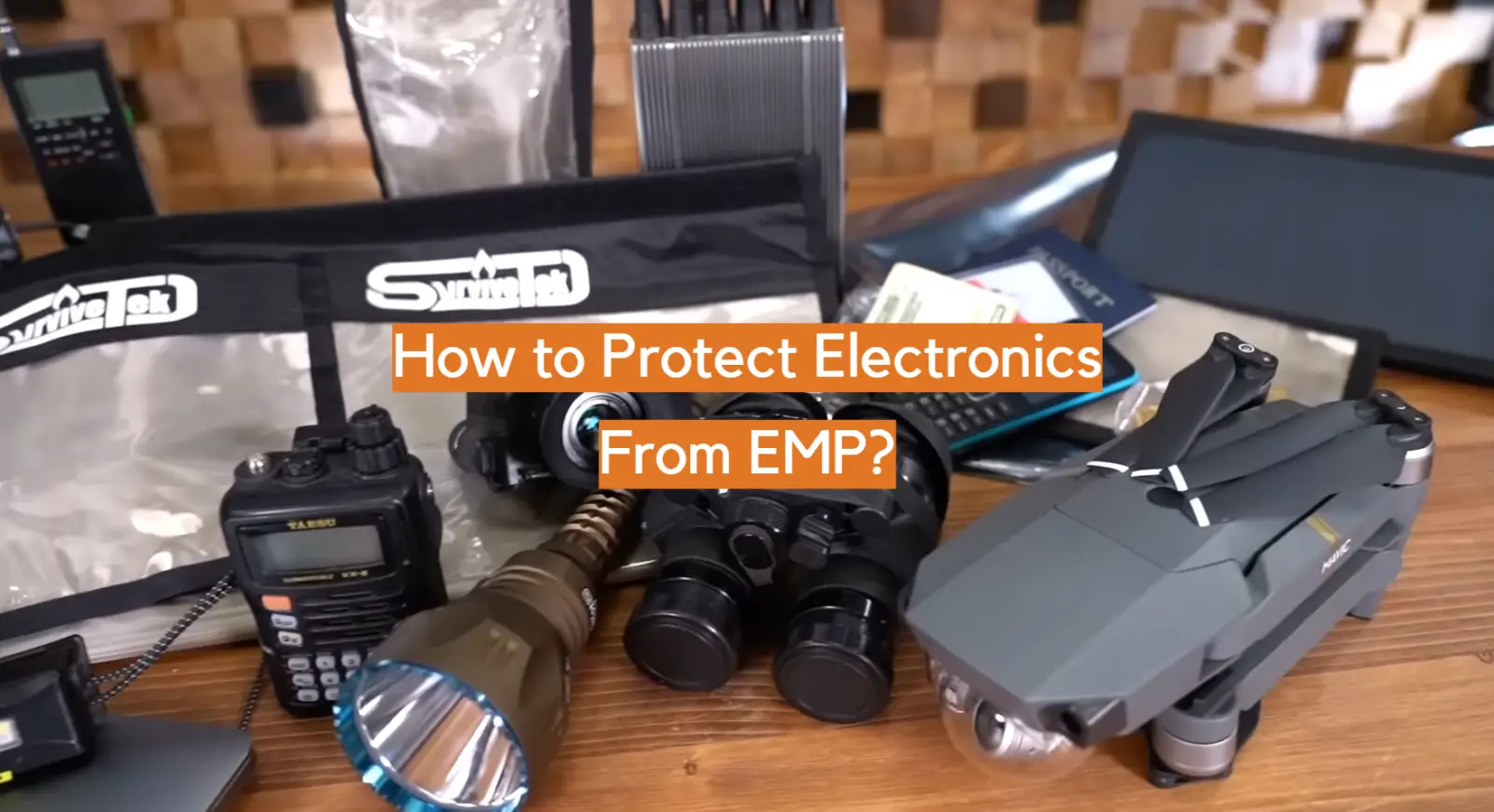



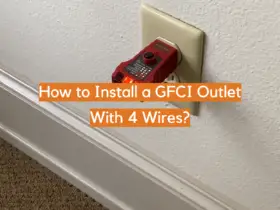
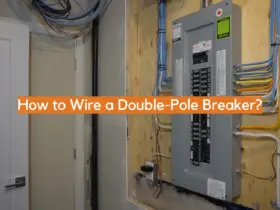
Leave a Reply